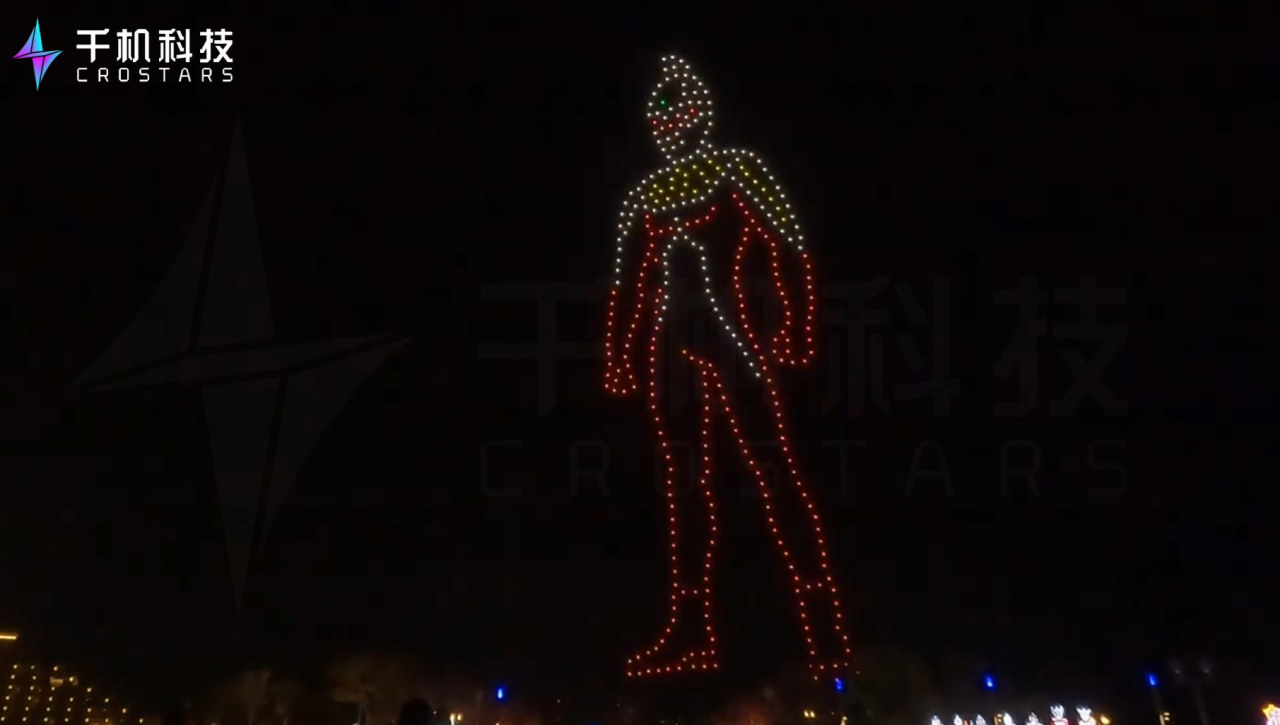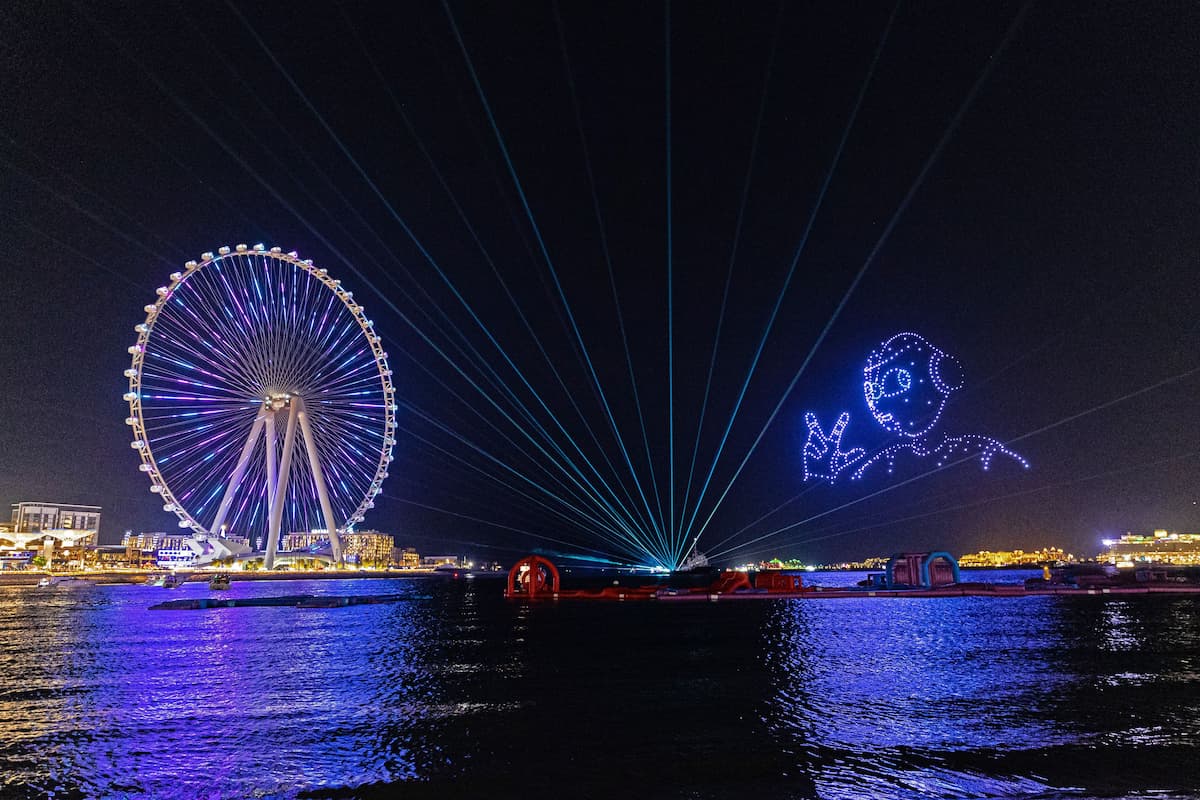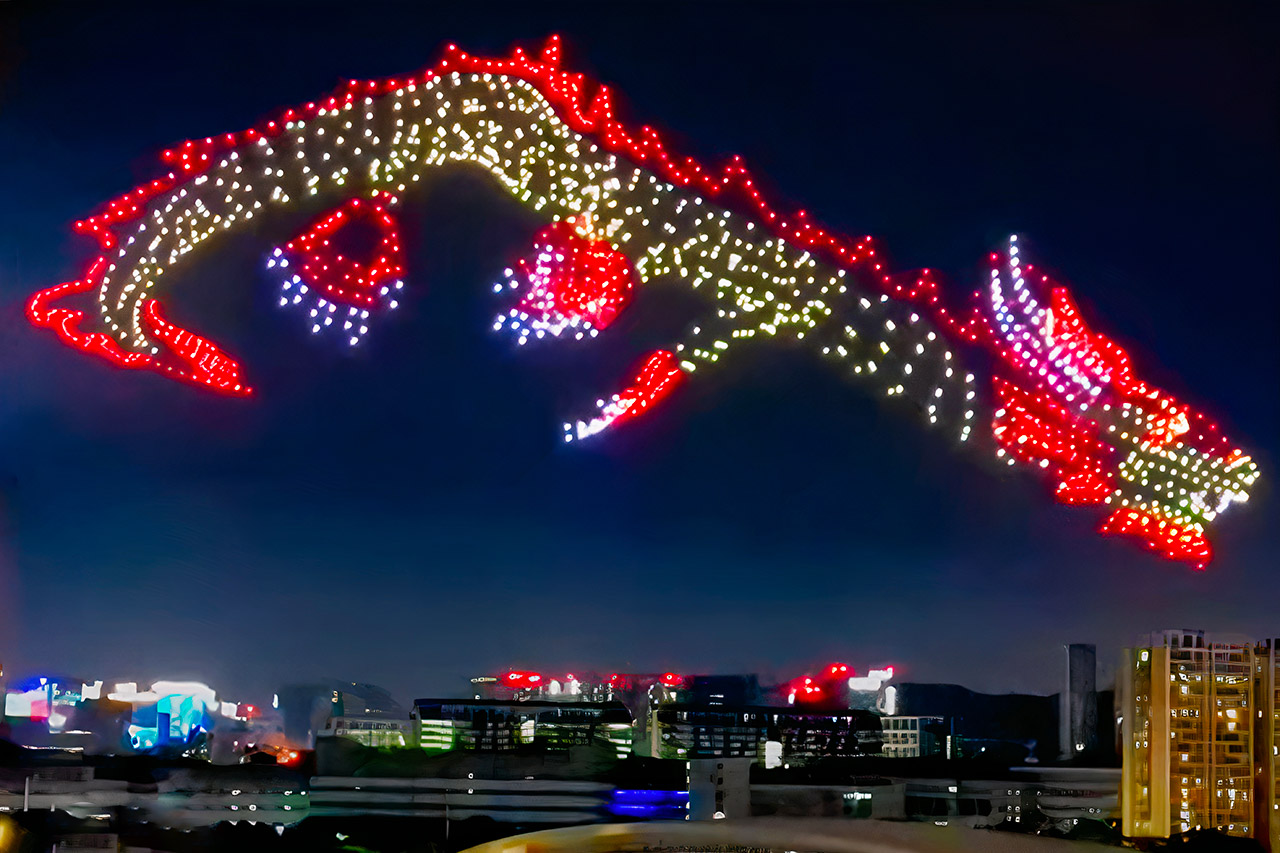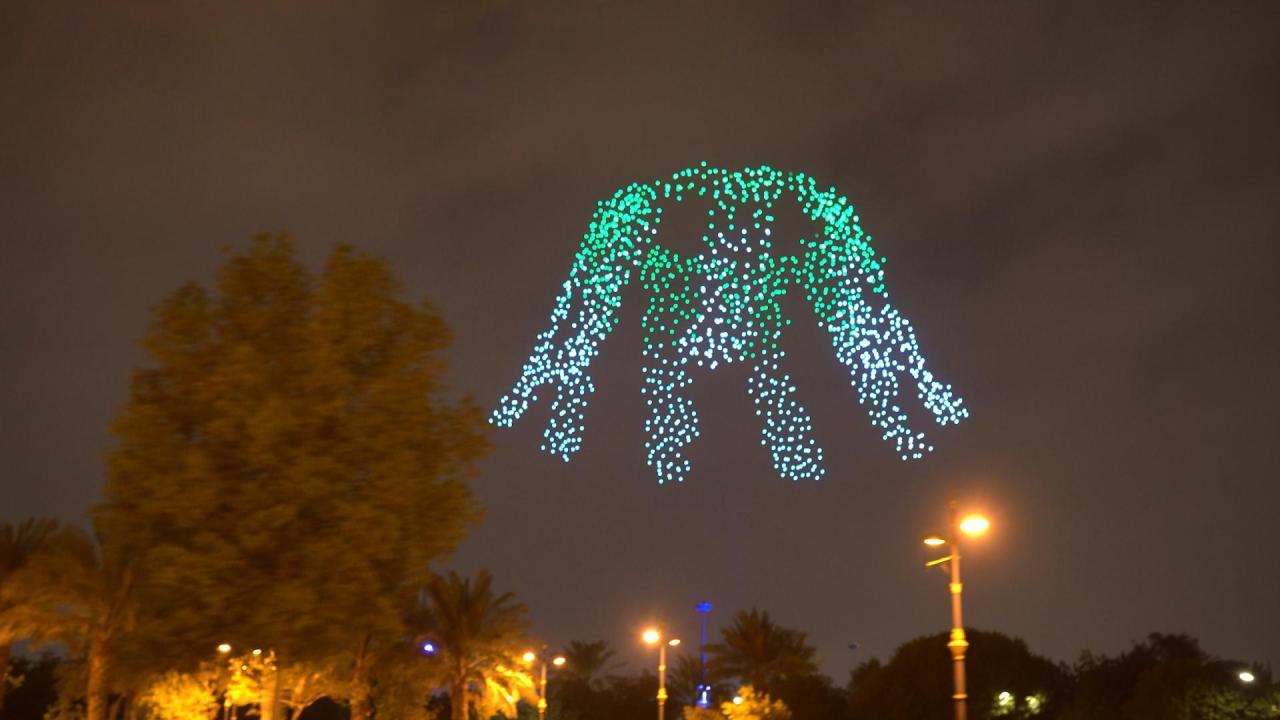Drone show accidents: They’re a chilling reminder that even the most dazzling spectacles can have a dark side. From spectacular malfunctions to devastating collisions, these incidents highlight the inherent risks in orchestrating synchronized aerial displays. This guide delves into the causes, consequences, and preventative measures surrounding these events, offering a comprehensive look at this rapidly evolving field.
We’ll explore the various types of accidents, examining contributing factors like technological failures, human error, and inadequate safety regulations. We’ll also analyze real-world case studies, revealing crucial lessons learned and highlighting the importance of robust safety protocols and thorough investigations. The aim is to provide a clearer understanding of how to minimize risks and ensure the future of drone shows is both spectacular and safe.
Drone Show Accidents: A Comprehensive Overview
Drone shows, while visually stunning, carry inherent risks. Understanding the types of accidents, safety regulations, technological vulnerabilities, and human factors involved is crucial for ensuring safer and more reliable performances. This overview delves into the key aspects of drone show safety, providing insights into accident prevention and post-accident procedures.
Types of Drone Show Accidents

Drone show accidents can be broadly categorized into malfunctions, collisions, and human errors. Understanding the frequency and contributing factors of each type is essential for developing effective prevention strategies.
| Type of Accident | Description | Contributing Factors | Prevention Strategies |
|---|---|---|---|
| Malfunctions (e.g., GPS failure, motor failure) | Unexpected failure of drone components leading to uncontrolled flight or crash. | Faulty hardware, software glitches, inadequate pre-flight checks. | Regular maintenance, redundant systems, pre-flight inspections. |
| Collisions (drone-to-drone, drone-to-object) | Impact between drones or a drone and another object (buildings, trees, etc.). | Poor flight planning, inadequate spacing, strong winds. | Sophisticated flight planning software, appropriate safety margins, weather monitoring. |
| Human Error (pilot error, communication failures) | Accidents resulting from mistakes made by the operators or support team. | Inadequate training, poor communication, fatigue, distractions. | Comprehensive training programs, clear communication protocols, adequate rest periods. |
Based on anecdotal evidence from industry reports (precise statistical data is limited due to the relatively new nature of large-scale drone shows and lack of centralized reporting), human error appears to be the most frequent cause of accidents, followed by malfunctions and then collisions. However, these proportions are estimates and vary depending on the specific circumstances.
One notable accident involved a large-scale drone show in [Location, Year] where a software glitch caused a significant number of drones to lose synchronization, resulting in several collisions and a partial failure of the planned choreography. The show was halted, and no serious injuries were reported, but the incident highlighted the importance of robust software and fail-safes.
Safety Regulations and Protocols

Various countries and regions have implemented regulations and best practices for drone show operations. Adherence to these guidelines is paramount for ensuring safety.
- Obtaining necessary permits and licenses for drone operations.
- Establishing designated flight zones and airspace restrictions.
- Implementing robust communication systems between pilots and ground control.
- Conducting thorough pre-flight checks and maintenance of drones.
- Developing contingency plans for various scenarios, including malfunctions and emergencies.
A hypothetical safety checklist might include: pre-flight drone inspection, weather assessment, communication system check, emergency procedures briefing, backup power sources availability, and post-flight data review.
Comparing the regulations between, for example, the United States and the European Union reveals differences in licensing requirements, airspace management protocols, and liability frameworks. The EU often has stricter regulations regarding data privacy and operational approvals.
Technological Factors Contributing to Accidents
Technological failures can significantly impact drone show safety. Understanding potential failure modes and implementing mitigation strategies is crucial.
Drone shows are amazing, but accidents can happen. Safety is paramount, and even seemingly minor incidents can highlight potential risks. For example, check out this article about a boy hit by drone – it underscores the need for strict regulations and careful planning during these spectacular events. Ultimately, minimizing risks in drone shows requires careful attention to detail and robust safety protocols.
| Component | Failure Mode | Impact on Show | Mitigation Strategy |
|---|---|---|---|
| GPS | Signal loss, interference | Loss of position awareness, uncontrolled flight | Redundant GPS modules, inertial navigation systems |
| Battery | Sudden power loss, premature discharge | Drone crash, incomplete show | High-quality batteries, battery monitoring systems |
| Motors | Motor failure, malfunction | Loss of control, crash | Regular maintenance, redundant motors |
Software glitches can cause synchronization issues, leading to collisions or unexpected maneuvers. Robust software testing and development practices are essential.
Redundancy and fail-safe mechanisms are crucial. For instance, if one GPS fails, a backup system should immediately take over, preventing a complete loss of control.
Drone show accidents, while rare, highlight the potential risks of these spectacular displays. One incident that emphasizes this is the recent drone crash in Paris , which thankfully resulted in minimal damage. Understanding the causes of such crashes, like this Paris incident, is crucial for improving safety protocols and preventing future drone show accidents.
Human Factors Contributing to Accidents, Drone show accident

Human error plays a significant role in drone show accidents. Addressing these factors through training and improved protocols is vital.
- Pilot error (improper flight maneuvers, ignoring safety protocols).
- Inadequate training (lack of experience, insufficient knowledge of emergency procedures).
- Poor communication (misunderstandings between pilots and ground crew).
- Fatigue (reduced alertness and decision-making capabilities).
Rigorous pilot training programs, including simulator training and practical flight exercises, are essential. Certification programs can standardize pilot competency and ensure adherence to safety standards.
A comprehensive training program would include theoretical instruction on drone mechanics, flight planning, emergency procedures, and risk mitigation strategies, coupled with extensive practical flight training in simulated and real-world scenarios.
Post-Accident Procedures and Investigations
Effective post-accident procedures are crucial for understanding the causes of accidents and preventing future incidents.
Investigations typically involve data recovery from flight logs, witness statements, drone examination, and analysis of environmental factors. A flowchart would depict the steps: accident reporting, securing the scene, data recovery, witness interviews, drone analysis, report compilation, and recommendations for prevention.
Regulatory bodies play a vital role in overseeing investigations, enforcing safety standards, and implementing preventive measures. They may impose penalties for non-compliance and issue safety advisories based on accident findings.
Insurance and Liability

Drone show operators need appropriate insurance coverage to mitigate financial risks associated with accidents.
- Liability insurance to cover potential damages to property or injury to individuals.
- Drone hull insurance to cover damage or loss of drones.
- Public liability insurance to cover claims arising from public injury or damage.
Liability issues can arise from accidents causing property damage, personal injury, or even death. Legal ramifications could include lawsuits, fines, and reputational damage.
Scenarios leading to legal action could involve a drone crashing into a building, causing damage or injuring someone, or a drone malfunction causing injury to a spectator.
Drone show accidents, unfortunately, happen. Sometimes, things go wrong, and you end up with a spectacular—but unwanted—drone show crash. Check out this article about one such incident: drone show crash for some insights into what can go wrong. Learning from these failures helps improve safety protocols and prevents future drone show accidents.
Illustrative Case Studies
Analyzing specific drone show accidents provides valuable insights into improving safety protocols.
Case Study 1: A drone show in [City, Country] experienced a power outage during the performance. Several drones lost power and fell to the ground. The cause was traced to a faulty power distribution system. The consequences included damaged drones and a disrupted show. The lesson learned was the importance of redundant power systems and thorough pre-show testing.
The accident scene showed a scattering of drones on the ground, with a few showing visible damage. The drones were clustered near the center of the performance area, suggesting a failure near the power source.
Case Study 2: During a nighttime drone show in [City, Country], strong winds caused several drones to deviate from their planned flight paths, resulting in near-misses and a few minor collisions. The cause was attributed to inadequate wind assessment and insufficient safety margins in the flight plan. The consequences were minor drone damage and a slightly disrupted show. The lesson learned emphasized the importance of thorough weather monitoring and incorporating wind speed into flight planning.
The accident scene showed several drones slightly off course, with a few drones exhibiting minor damage. The drones were spread over a larger area than planned, indicating the impact of the strong winds.
Analyzing these case studies reveals the need for robust safety protocols, including comprehensive pre-flight checks, redundant systems, and thorough weather assessments, ultimately leading to improved safety procedures and risk mitigation strategies.
Closing Summary
Ultimately, preventing drone show accidents requires a multi-faceted approach. It’s not just about advanced technology; it’s about rigorous training, adherence to strict safety regulations, thorough pre-flight checks, and a culture of safety that prioritizes risk mitigation at every stage. By learning from past mistakes and embracing proactive safety measures, we can continue to enjoy the breathtaking spectacle of drone shows while minimizing the potential for tragedy.
Popular Questions: Drone Show Accident
What is the average cost of insurance for a drone show?
Insurance costs vary greatly depending on factors like the number of drones, show location, and liability limits. Expect to pay several thousand dollars annually for comprehensive coverage.
What happens if a drone crashes into a person during a show?
Serious legal and financial ramifications are likely, including lawsuits for personal injury and property damage. Liability insurance is crucial to mitigate these risks.
How often do drone show accidents occur?
Precise statistics are scarce due to underreporting. However, anecdotal evidence suggests that accidents are relatively infrequent compared to the overall number of drone shows, but the potential consequences are significant.
Are there specific certifications required for drone show pilots?
Regulations vary by country/region. Many jurisdictions require specialized certifications or licenses beyond basic drone operation permits, especially for commercial shows.
